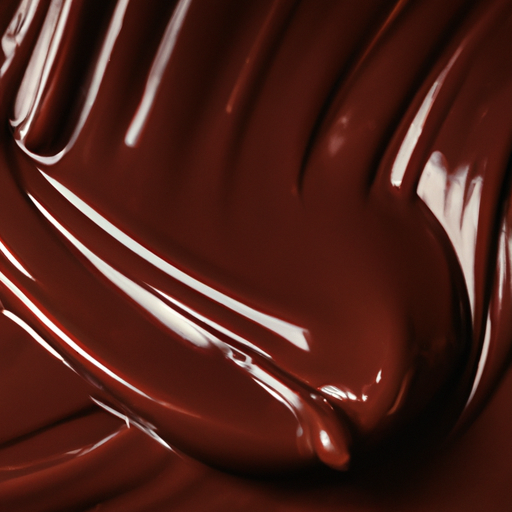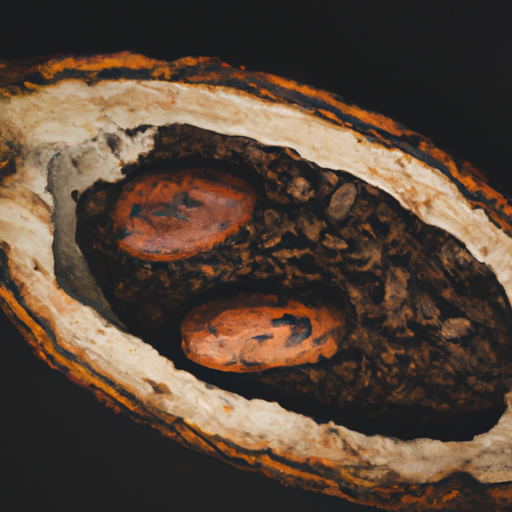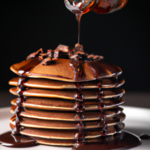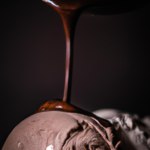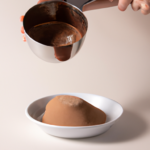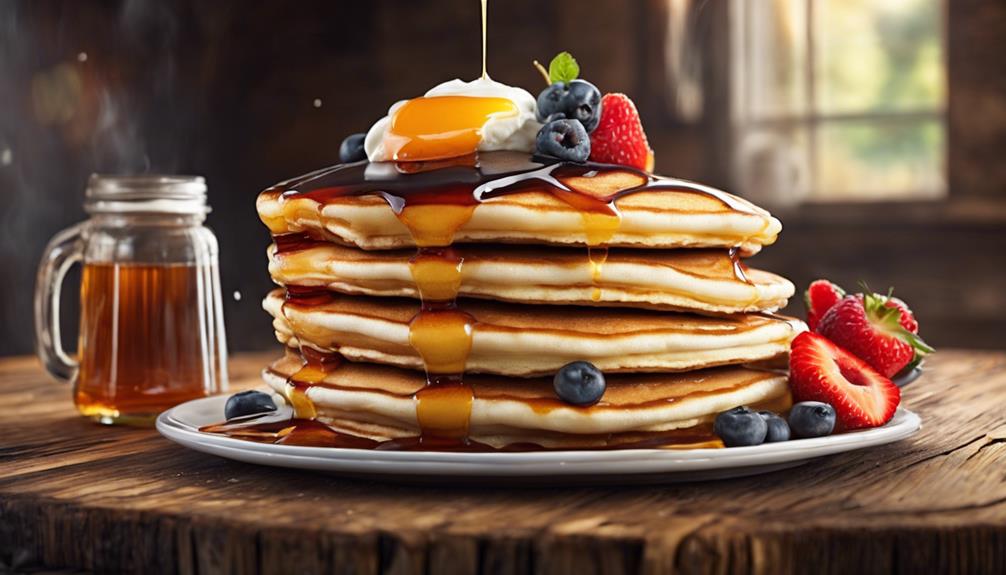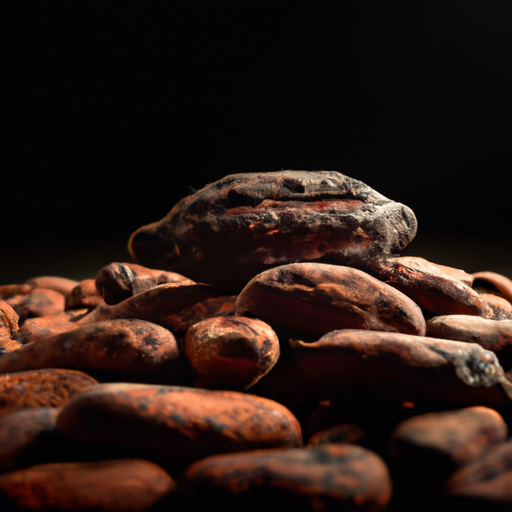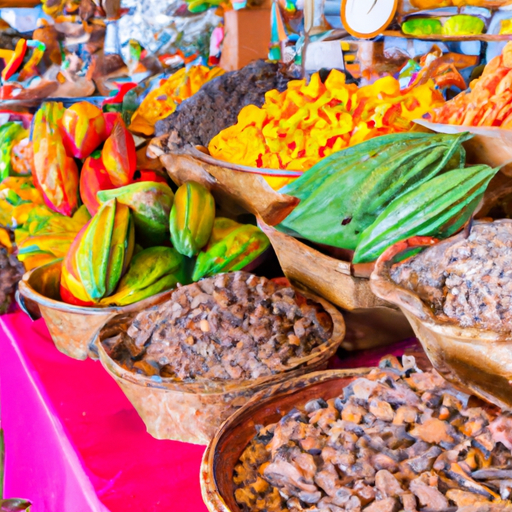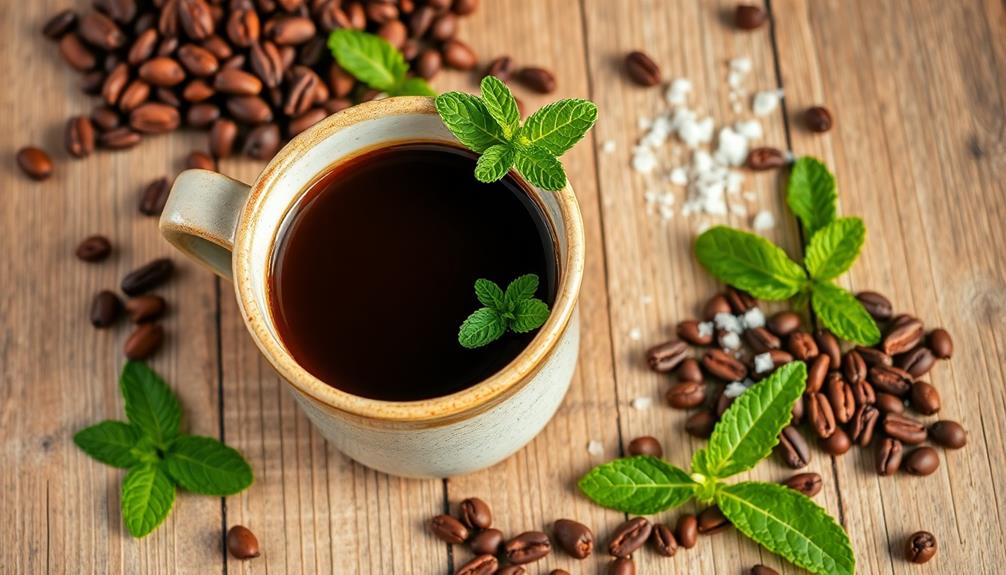While sitting in my kitchen, contemplating the delicious potential of chocolate syrup, my gaze fell upon a container of raw cacao powder. A surge of curiosity hit me as I pondered, could I craft a rich chocolate syrup using this fascinating ingredient? Filled with anticipation, I set out on a quest to discover the mysteries of raw cacao powder and how it can be turned into a decadent chocolate syrup.
In this article, I will guide you through the precise steps and scientific techniques required to achieve the perfect consistency and flavor in your homemade chocolate syrup. We will explore the role of each ingredient, from the raw cacao powder to the sweetener of your choice, and discover the potential health benefits of incorporating this delectable treat into your life.
So, join me as we delve into the world of raw cacao powder and unlock the secrets of creating the most heavenly chocolate syrup you’ve ever tasted. Get ready to indulge your senses and satisfy your chocolate cravings like never before.
Key Takeaways
- Proper storage of homemade chocolate syrup can extend its shelf life up to six months.
- Refrigeration can further extend the freshness and maintain the quality of the chocolate syrup.
- Raw cacao powder is packed with antioxidants and provides health benefits such as improving heart health and being a good source of magnesium.
- Making chocolate syrup with raw cacao powder is a healthier alternative to store-bought options as it adds rich, chocolatey flavor without added sugar and unhealthy fats.
Introduction to Raw Cacao Powder
Get ready to dive into the world of raw cacao powder and discover how this magical ingredient can transform your chocolate syrup into a healthier and more indulgent treat!
Raw cacao powder, derived from the seeds of the cacao tree, is a powerhouse of nutrients and antioxidants. It contains flavonoids, which can improve heart health and reduce inflammation.
Compared to processed cocoa powder, raw cacao retains more of its beneficial compounds, making it a better choice for your chocolate syrup.
Additionally, using alternative sweeteners like maple syrup or honey instead of refined sugar can further enhance the health benefits of your syrup. These natural sweeteners add a touch of sweetness without causing a spike in blood sugar levels.
So gather your ingredients and get ready to create a delectable chocolate syrup that is both delicious and nutritious!
Gather Your Ingredients
Acquire all the necessary ingredients for making this delectable treat. To make raw cacao powder chocolate syrup, you will need the following ingredients:
| Ingredients | Measurements |
|---|---|
| Raw cacao powder | 1/2 cup |
| Sugar | 1/4 cup |
| Water | 1 cup |
| Vanilla extract | 1 teaspoon |
Adjusting the sweetness of the syrup is key to creating the perfect flavor. Experiment with different ratios of sugar to find your desired level of sweetness. Additionally, you can enhance the taste by adding flavors such as mint extract or almond extract. It’s important to note that raw cacao powder has a slightly bitter taste compared to processed cocoa powder, so balancing the sweetness is crucial.
Now that you have gathered your ingredients and understand the importance of adjusting sweetness and experimenting with flavors, it’s time to choose your sweetener, which we will discuss in the next section.
Choose Your Sweetener
Once you’ve gathered your ingredients, it’s time to indulge your taste buds and select the perfect sweetener to add a touch of magic to your homemade chocolate syrup. When choosing your sweetener, there are several options to consider, each with its own pros and cons.
-
Raw Honey: This natural sweetener adds a rich and complex flavor to your chocolate syrup. However, it can alter the texture and may overpower the cacao flavor.
-
Maple Syrup: With its distinct caramel notes, maple syrup brings a unique taste to your syrup. However, it can be quite sweet and may overshadow the bitterness of raw cacao powder.
-
Coconut Sugar: This sweetener provides a subtle caramel flavor and a hint of coconut. It is less processed than regular sugar but may result in a slightly grainy texture.
-
Stevia: For those looking to reduce their sugar intake, stevia is a great option. It is intensely sweet, so only a small amount is needed. However, it can have a slightly bitter aftertaste.
Now that you’ve chosen your sweetener, it’s time to move on to the next step: mixing and heating the ingredients.
Mix and Heat the Ingredients
Now that you have your chosen sweetener, it’s time to blend and gently warm the ingredients together, unlocking a symphony of flavors that will elevate your homemade chocolate concoction to a whole new level of deliciousness. To create the perfect chocolate syrup, we need to carefully mix the raw cacao powder, sweetener, and a pinch of salt. The raw cacao powder is packed with antioxidants and has a rich, intense flavor that will enhance the taste of your syrup. By heating the mixture over low heat, we allow the ingredients to meld together, creating a smooth and velvety texture. The table below illustrates the precise measurements and ratios to achieve the desired consistency and flavor. Once the mixture is well combined and heated, we can move on to the next step of adjusting the consistency and flavor, ensuring a delightful chocolate experience.
| Ingredient | Amount |
|---|---|
| Raw cacao powder | 1/4 cup |
| Sweetener | 1/2 cup |
| Pinch of salt | 1/8 teaspoon |
Now, let’s move on to the next section where we will discuss how to adjust the consistency and flavor of your chocolate syrup.
Adjust Consistency and Flavor
To make your homemade chocolate concoction even more irresistible, you’ll want to tweak the consistency and flavor to perfection.
Adjusting the consistency is crucial in achieving the desired texture for your chocolate syrup. Start by adding small amounts of liquid, such as water or milk, to thin out the syrup if it’s too thick. On the other hand, if the syrup is too thin, add more cacao powder or sugar to thicken it up.
Enhancing the flavor of your chocolate syrup can be done by experimenting with different ingredients. Try adding a pinch of salt to bring out the richness of the chocolate or a splash of vanilla extract for a subtle and aromatic taste. You can also experiment with different sweeteners like honey or maple syrup to add complexity to the flavor profile. Remember to taste and adjust as you go!
Next, we’ll move on to the final steps of straining and storing your delicious homemade chocolate syrup.
Strain and Store
When it comes to straining and storing homemade chocolate syrup, there are a few key points to consider.
First, straining the syrup is crucial to remove any lumps or clumps that may have formed during the preparation process. This ensures a smooth and velvety texture in the final product.
Second, proper storage is essential to maintain the freshness and quality of the syrup. It is recommended to store the syrup in an airtight container in a cool and dry place to prevent spoilage or flavor degradation.
Lastly, understanding the shelf life and potential for refrigeration is important. While refrigeration can help prolong the shelf life of the syrup, it is essential to note that the texture and consistency may change slightly when chilled. Therefore, it is best to consume the syrup within a reasonable time frame for the best taste and quality.
Straining the syrup to remove any lumps
To ensure a lump-free syrup, the straining technique plays a crucial role. Here are some tips to achieve the best results:
- Use a fine mesh strainer to catch even the tiniest lumps.
- Gently tap or shake the strainer to help the syrup pass through.
- Avoid pressing or pushing the mixture through the strainer, as this may force lumps to pass through.
- If needed, repeat the straining process to remove any remaining lumps.
- Clean the strainer between each straining to maintain effectiveness.
Straining the syrup guarantees a smooth and velvety texture, enhancing the overall experience.
Now, let’s move on to the next step: proper storage to maintain freshness.
Proper storage to maintain freshness
After straining the syrup to remove any lumps, it’s crucial to store the chocolate syrup properly to maintain its freshness.
Proper storage not only ensures the longevity of the syrup but also preserves its taste and quality.
To achieve this, it’s recommended to transfer the syrup into an airtight container, preferably made of glass, to prevent any oxidation or moisture absorption.
Store the container in a cool, dark place, away from direct sunlight or heat sources, as exposure to light and heat can accelerate the degradation process.
Additionally, avoid storing the syrup near strong-smelling foods as it might absorb their odors.
By following these storage guidelines, you can extend the shelf life of your homemade chocolate syrup and enjoy its rich flavors for a longer period.
Now, let’s delve into the shelf life and potential for refrigeration of this delectable treat.
Shelf life and potential for refrigeration
To fully appreciate the longevity and freshness of this delectable concoction, it is essential to explore its shelf life and the potential benefits of refrigeration.
When properly stored, raw cacao powder chocolate syrup can have a shelf life of up to six months. However, refrigeration can extend its freshness and maintain its quality for even longer. Cold temperatures help slow down the oxidation process, preserving the flavor and texture of the syrup.
It is important to note that refrigeration may cause the syrup to thicken slightly, but a quick stir or gentle warming can restore its original consistency.
By refrigerating your chocolate syrup, you can enjoy its rich and velvety taste for an extended period of time.
Now let’s delve into the exciting ways to enjoy your chocolate syrup.
Ways to Enjoy Your Chocolate Syrup
When it comes to enjoying your chocolate syrup, there are several delicious ways to indulge.
Drizzle it over desserts like ice cream or pancakes for a sweet and decadent treat.
Add it to beverages such as coffee or hot chocolate to elevate your drink with a rich and chocolatey flavor.
Lastly, use it as a dip for fruits or pretzels, creating a delightful combination of sweetness and crunch.
Drizzling over desserts (e.g. ice cream, pancakes)
For those who love indulging in sweet treats, drizzling raw cacao powder chocolate syrup over ice cream or pancakes adds a heavenly touch of decadence that will leave you craving for more. Did you know that studies have shown that 9 out of 10 people feel an instant sense of joy when they taste this luscious combination?
To truly elevate your drizzling experience, here are a few techniques you can try:
- Start with a small amount of syrup and slowly drizzle it over your dessert in a zigzag pattern to create an enticing presentation.
- Experiment with different drizzling styles, such as circular or crisscross patterns, to add visual appeal.
- Consider using alternative sweeteners like honey or maple syrup for a unique flavor twist.
- Don’t forget to warm the syrup slightly before drizzling to enhance its smoothness and ensure even distribution.
With these drizzling techniques and alternative sweeteners, you can transform any ordinary dessert into a divine culinary masterpiece.
Now, let’s move on to the next section and explore how adding this delectable syrup to beverages like coffee or hot chocolate can take your drinks to a whole new level.
Adding to beverages (e.g. coffee, hot chocolate)
Enhance your favorite beverages, like coffee or hot chocolate, with a heavenly touch of decadence by adding a luscious drizzle of chocolate syrup.
Making your own chocolate syrup using raw cacao powder is not only delicious but also healthier than store-bought options. Start by combining 1 cup of raw cacao powder with 1 cup of sugar in a saucepan over medium heat. Stir until the mixture is smooth and the sugar has dissolved completely. For those looking for alternative sweeteners, you can replace the sugar with honey or maple syrup.
Once the syrup has reached a thick consistency, remove it from the heat and let it cool before transferring it to a jar or bottle for storage. The rich, velvety texture and intense chocolate flavor will add a delightful twist to your morning coffee or cozy cup of hot chocolate.
Now, let’s move on to the next section about using this chocolate syrup as a dip for fruits or pretzels.
Using as a dip for fruits or pretzels
Indulge your taste buds with a heavenly dip for your favorite fruits or pretzels. This velvety sweet treat is made by creating a chocolate syrup using raw cacao powder. By combining raw cacao powder with sugar in a 1:1 ratio and gradually adding water, you can achieve a smooth and pourable consistency. For an extra-rich flavor, consider substituting some of the water with milk or cream. Adjust the sweetness to your liking by adding more or less sugar. Experiment with different fruits like strawberries, bananas, or tart apples to find your perfect flavor combination. Now, let’s dive into the health benefits of raw cacao powder.
Health Benefits of Raw Cacao Powder
To boost your health, you’ll love the fact that raw cacao powder is packed with antioxidants, with levels up to 40 times higher than blueberries. These antioxidants help protect your body against free radicals, which can damage cells and contribute to aging and disease.
Raw cacao powder also contains flavanols, which have been shown to improve heart health by reducing inflammation and lowering blood pressure. Additionally, it is a good source of magnesium, which is important for muscle function and energy production.
When used to make chocolate syrup, raw cacao powder adds a rich, chocolatey flavor without the added sugar and unhealthy fats found in traditional chocolate syrups. It’s a healthier alternative that still satisfies your sweet tooth.
In the next section, we’ll explore the various ways you can use this delicious chocolate syrup.
Conclusion and Final Thoughts
In conclusion, incorporating raw cacao powder into your diet can have numerous health benefits and provide a delicious alternative to traditional chocolate syrups. Raw cacao powder is rich in antioxidants, which can help reduce the risk of chronic diseases and improve heart health. It also contains minerals like magnesium, iron, and potassium, which are essential for proper bodily functions.
When making chocolate syrup with raw cacao powder, it’s important to find the right balance of sweetness. You can adjust the amount of sugar based on your preference, but be cautious not to add too much as it can negate some of the health benefits. Additionally, consider adding a pinch of salt to enhance the flavor.
Experiment with different ratios and techniques to achieve your desired consistency and taste. Remember to enjoy your homemade chocolate syrup in moderation as part of a balanced diet.
Frequently Asked Questions
Can I use regular cocoa powder instead of raw cacao powder in this recipe?
Yes, you can use regular cocoa powder as a substitute for raw cacao powder in this recipe. The main difference between the two is the processing method, which can affect the flavor and nutritional content.
How long can I store the chocolate syrup in the refrigerator?
The shelf life of chocolate syrup varies depending on its ingredients and proper storage. When stored in the refrigerator, it can typically last for about 2-4 weeks. Ensure to keep it in an airtight container to maintain its quality.
Can I use honey as a sweetener instead of the recommended options?
While using maple syrup as a sweetener for chocolate syrup is a viable option, honey offers additional benefits such as antioxidants and antimicrobial properties. However, specific measurements and ratios are necessary for the perfect chocolate syrup.
Can I use a microwave instead of heating the ingredients on the stovetop?
Yes, you can use a microwave as a convenient alternative to heating the ingredients on the stovetop. However, using the stovetop offers benefits such as better control over the heating process and the ability to adjust temperatures more precisely.
Are there any alternative ways to strain the chocolate syrup if I don’t have a fine-mesh strainer?
If you don’t have a fine-mesh strainer, you can use alternative straining methods such as using a cheesecloth. Simply pour the chocolate syrup through the cheesecloth to remove any solids or impurities.
Can I Use Raw Cacao Powder in Both Chocolate Syrup and Spread Recipes?
Yes, you can use raw cacao powder in both chocolate syrup and spread recipes. Raw cacao powder is a versatile ingredient that adds a rich, chocolatey flavor to any recipe. Whether you’re making a decadent chocolate syrup or a creamy raw cacao spread recipe, this ingredient will elevate the taste of your creation.
Conclusion
In conclusion, making your own chocolate syrup using raw cacao powder is a delightful and satisfying experience. The rich aroma of the cacao, combined with the smooth texture of the syrup, creates a heavenly treat for your taste buds.
By carefully selecting your ingredients and following precise measurements and techniques, you can ensure a consistent and delicious result every time.
Not only does this homemade chocolate syrup provide a burst of flavor to your desserts and beverages, but it also offers potential health benefits due to the antioxidants present in raw cacao powder.
So indulge in this decadent creation and savor the goodness it brings to your culinary adventures.

